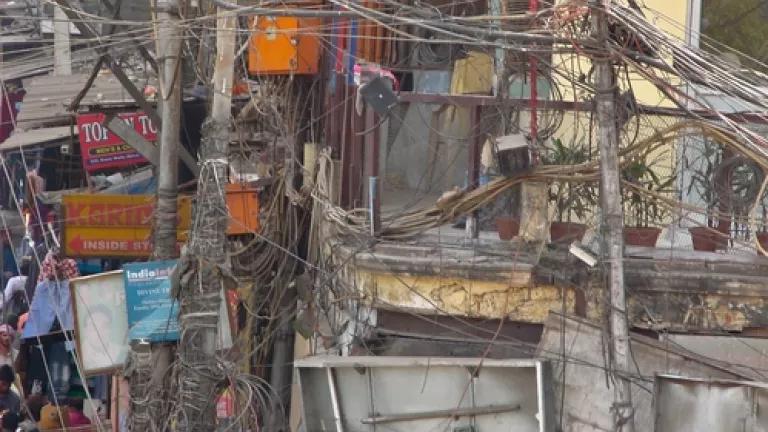
Hundreds of trains stalled, traffic snarled, businesses ground to a halt, and stranded commuters walked home in the rain across North India as three electricity grids failed yesterday. The world’s biggest power outage in history left more than 680 million people without electricity across the country. As one blogger Paul Woodward commented, “That’s like the lights going out from Anchorage in Alaska all the way down to Caracas in Venezuela.”
This massive blackout eclipsed a significant announcement for India’s burgeoning solar market – solar photovoltaic power installed in India has exceeded the 1 gigawatt (GW) benchmark. In 2010, as a part of India’s National Solar Mission, the Ministry of New and Renewable Energy (MNRE) had set an ambitious target of at least 1,000 megawatts of installed grid-connected solar energy by 2013. Solar is fast becoming an accessible and cheap energy source across India, but more can be done to foster this promising local resource. Achieving this milestone ahead of schedule should boost confidence in the nascent industry’s growing ability to contribute to India’s power supply at a critical juncture in the country’s energy planning.
Tangled electrical wires over Delhi, March 2012 (Photo credit: Meredith Connolly)
In addition to adopting energy efficiency measures in buildings and appliances, the Indian government can build on its early success to expand renewable energy sources, particularly solar and wind power. As we assess in an NRDC report Laying the Foundation for a Bright Future, co-authored with our partner, the Council on Energy, Environment and Water, the National Solar Mission has made promising headway in India, but many obstacles to widespread installation remain. Measures should be adopted to incentivize off-grid solar projects in rural villages and to encourage cheaper domestic financing from risk-averse banks. Fostering innovative renewable technologies with storage potential, such as new solar thermal projects, could address base load grid issues and decrease India’s current dependency on insufficient and dirty coal plants.
Rapidly increasing electricity demand – fueled in part by an exploding market for high-energy appliances like air conditioners and water pumps – is exacerbating India’s long-standing struggle to provide the booming country with enough power. Although the root causes of this most recent power failure are still being determined, the blackout’s harmful impact on economic development highlights the urgent need for new long-term energy solutions in India.
Could this be India’s pivotal Cuyahoga River moment? Just like when the polluted Ohio river caught on fire in June 1969, sparking America’s modern environmental movement, perhaps this devastating blackout can propel India’s national energy decisions out of the dark – this crisis could catalyze a national commitment to truly incorporate clean energy solutions into its plans to improve national infrastructure.
Securing India’s energy future on a sustainable path calls for strong investment in its emerging clean energy market and widespread adoption of energy efficiency measures. The rapid and vast investments in infrastructure required to alleviate stress on the antiquated grid should plan to accommodate the integration of renewable energy. This historic blackout is a wake-up call for the Indian government to flip the switch onto a bright and clean energy future.
